Photographs: Reuters Shailesh Dobhal in New Delhi
The world economy is going through a tumultuous period.
Europe's decade-old common market, the euro zone, almost looked like disintegrating last year but for a last-minute over-a-trillion-euro deal to rescue its indebted and profligate members.
The spectacle of narrow-minded and partisan politics bringing the world's largest economy, the US, on a brink of default was something that a global economy battling severe slowdown could have done without.
A rating downgrade of the US thereafter only fuelled fear of a full-blown global recession.
. . .
The India story: Three cheers for 2012, and beyond!
Photographs: Reuters
Closer home, 2011 started with hopes of over nine per cent economic growth, but the mood quickly soured, what with the government shy of taking policy decisions and businesses stung by high interest rates and general slackness in demand.
An environment of brinkmanship and distrust marked the discourse between the government, civil society and business. Uncertainty made markets nervous, and investors lost billions in stock market wealth.
But, even amid all this gloom and doom, there is much going for India that one can take comfort from.
While the developed world battles an ageing, dependent population, we are sitting on a demographic dividend where over half our population is under 25 years of age.
. . .
The India story: Three cheers for 2012, and beyond!
Photographs: Reuters
True, we are yet to meaningfully encash this advantage, and skill shortage is endemic, making large part of people entering the labour force unemployable.
But, it seems there is hope after all. Of late, the government has turned its attention to skill building, with the aim of skilling 150 million people by 2022.
What's also heartening is that productivity in India is on the rise. It was up 3.9 per cent a year between 2004-05 and 2008-09, from a low of 2.3 per cent between 1993 and 2004, and now pips China, which reported under 3 per cent during the four-year period ending March 2009, according to a KLEMS research project at Icrier last year.
This, along with the rupee's new normal, at Rs 50-something to a dollar, spells growing competitiveness for Indian exports vis-a-vis China, all things remaining same.
. . .
The India story: Three cheers for 2012, and beyond!
Photographs: Reuters
And, even while we reorient or strategy to export more, our huge domestic consumption-driven growth model is envy of bigger economies like China, which is desperately trying to cut back its dependence on export-led growth.
Low penetration and/or usage of everyday consumables, even durables like refrigerators, washing machines, automobiles and the like, coupled with rising incomes indicate robust growth ahead, barring small bouts of stress caused by high interest rates and/or broader global slowdown-led demand slackness.
A big and growing middle class, 274 million-odd Indians at last count, is good news for markets of everything from colas to cars.
For all the rancour created by public spats between the civil society groups and the government, and allegations of promoting crony capitalism by powers that be, there is no denying that transparency at all levels of the government, even businesses is on the rise.
. . .
The India story: Three cheers for 2012, and beyond!
Photographs: Reuters
In an environment where people are refusing to put up with corrupt people or practices, regulators are becoming more vigilant, and legislators are willy-nilly empowering them more.
The midnight fiasco that the proposed anti-graft legislation in the Lokpal Bill suffered in the Rajya Sabha on Thursday is but a minor roadblock in the path towards more accountable government machinery.
Electoral politics, though still largely caste-, region- and religion-led, is making a welcome break to address new, young India's rising aspiration, while taking cognizance of the huge income and consumption disparity that exists in our polity.
Though the means employed - from the much-celebrated guaranteed rural jobs scheme, the Mahatma Gandhi National Rural Employment Guarantee Scheme, to the upcoming food security Act - are no doubt market distorting and a drain on the exchequer, but the spirit of inclusion here should also count for something.
. . .
The India story: Three cheers for 2012, and beyond!
Photographs: Reuters
More efficient means of redistribution, direct cash transfers to the needy, mooted last year and still struggling to evolve a practical mechanism, will make government get more bang for its social sector bucks by bypassing inefficiency, vested interests and graft in the system.
According to the 2011 census, for the first time since the country started on the census path in 1901, the number of people India's cities added in the 2001-2011 decade (91 million) exceeded the numbers added in its villages (90.4 million).
The world over, growing urbanisation, with all the concomitant development of infrastructure, has elevated millions to a better quality of life and has spurred economy-wide growth. If handled properly, there is no reason why the Indian experience should be any different.
At present, under a third of our people live in urban areas. Imagine the growth potential that the rising urbanisation - 125 million more urban Indians here to 2020 - can herald!
. . .
The India story: Three cheers for 2012, and beyond!
Photographs: Reuters
Advantage India
1. Young demographics
2. Strong domestic consumption-led growth
3. Growing middle class
4. Increasing productivity
5. Strong entrepreneurial culture
6. More transparent & accountable government, big businesses & markets
7. Politics of aspiration & inclusion
8. Growing urbanisation

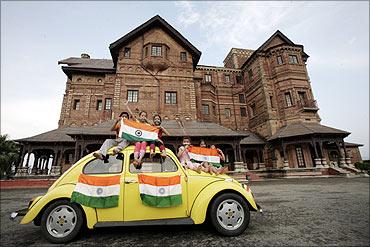
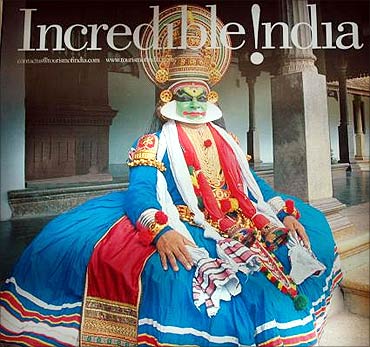

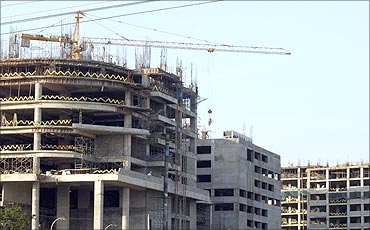

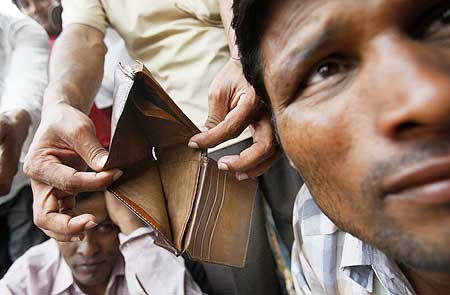
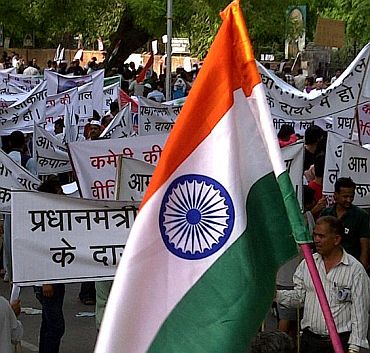

article